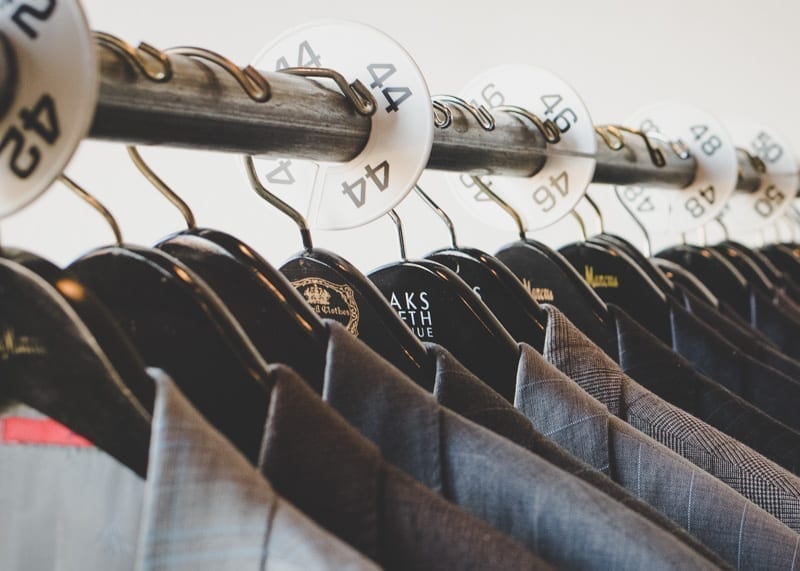
People often contact us for the first time after a big life event.
They might be in the midst of a career change, or maybe they’re moving and need to prepare by decluttering the home. More often, it’s a change in their size.
Weight loss has an obvious effect on the way clothing fits; and even a small drop can make a big difference.
Drop two sizes and you’re really looking at a problem. Suits and jackets that once fit perfectly now seem baggy. Even the fit of your shoes can change.
If you’ve invested in lots of high end clothing over the years, then you’ll be reluctant to toss these items, even if they don’t fit you.
But if you can’t wear them, letting these gems hang in your closet is a missed opportunity.
Call Your Tailor First
After a noticeable size change, your first step should be calling your tailor. Schedule an appointment to determine which (if any) of your treasured items can be altered or resized to fit you now.
Remember that you can’t expect a tailor to perform miracles, because “resizing” is not a simple or easy task. I asked John Meegan, owner at Top Shelf Inc, for his input, because I know this is a frequent request at his shop.
“A good tailor has to not only be highly skilled to do the work competently, they should also be good at giving the customer intelligent advice. There are very few tailors left who combine those skills.”
John continues: “When you look at resizing a suit after changing sizes, it’s also important to consider the style of the garment.
Do you want a suit that will still be dated by its lapel width, its length, or the button position? Should you shorten a coat and end up with the pockets too close to the bottom of the coat?
The more expensive the garment was to begin with, the more difficult it is to do the work of restyling so that it mimics the craftsmanship of the original.It can easily run up to $200-300 to take in a jacket, shorten the length and change the sleeve length. Taking in pants in the waist seat and thigh area can run between $45-60, and changing the leg shape in the knee and bottom another $45.
If the suit’s original cost was upwards of $2000, it might make sense to invest the money, but it will not be the same as a new suit. The armhole depth of the coat and the crotch depth of the pants will not change just by taking them in. The expectations and limitations of reasonable alteration often conflict with what the consumer considers a fair price and the desired outcome.”
As John explains, a quality tailoring job can be costly and the outcome limited. Nonetheless, you may decide that it’s worth the money, especially if it means you can continue wearing your best clothes.
If you decide that tailoring is not the right choice, then it’s time to explore other options:
1. Donation
Americans donate more than 10 million tons of clothing to thrift stores each year. Why? Because it feels charitable, and if the clothes are in wearable condition, it feels wrong to throw them in the trash.
Thrift stores are now overflowing with clothes. Unfortunately, many of them are never worn again, but end up in the hands of a textile recycling company.
While many charity store donations are tax deductible, the value of that deduction is based on secondhand market value, not what you paid for the garment. As the IRS states in Publication 561:
The price that buyers of used items actually pay in used clothing stores, such as consignment or thrift shops, is an indication of the value.
In any case, clothing donation remains a great option when you just want to declutter your closet and move on.
2. Give them to a friend
The gift option may be your most gratifying choice, because it can feel really good to give away luxury items to people who wouldn’t normally buy them.
But use a little bit of caution when you go this route. My advice is to only give to your close friends and family. Other people may not appreciate the gift, or worse, they may take advantage of your kindness.
3. Sell them
You can sell designer clothes in so many ways. First, consider how much work you’d like to put into this process, and then choose an option accordingly.
Do you like selling stuff on Craigslist or eBay or Poshmark? Are you willing to ship items out frequently? Are you prepared to answer questions from potential customers? If you are, then try selling them online yourself. Experiment with different websites to figure out what works best for your style of clothing. You may actually enjoy it.
If you don’t enjoy online selling or don’t have the time for it, the best option is to find a good resale or consignment shop.
